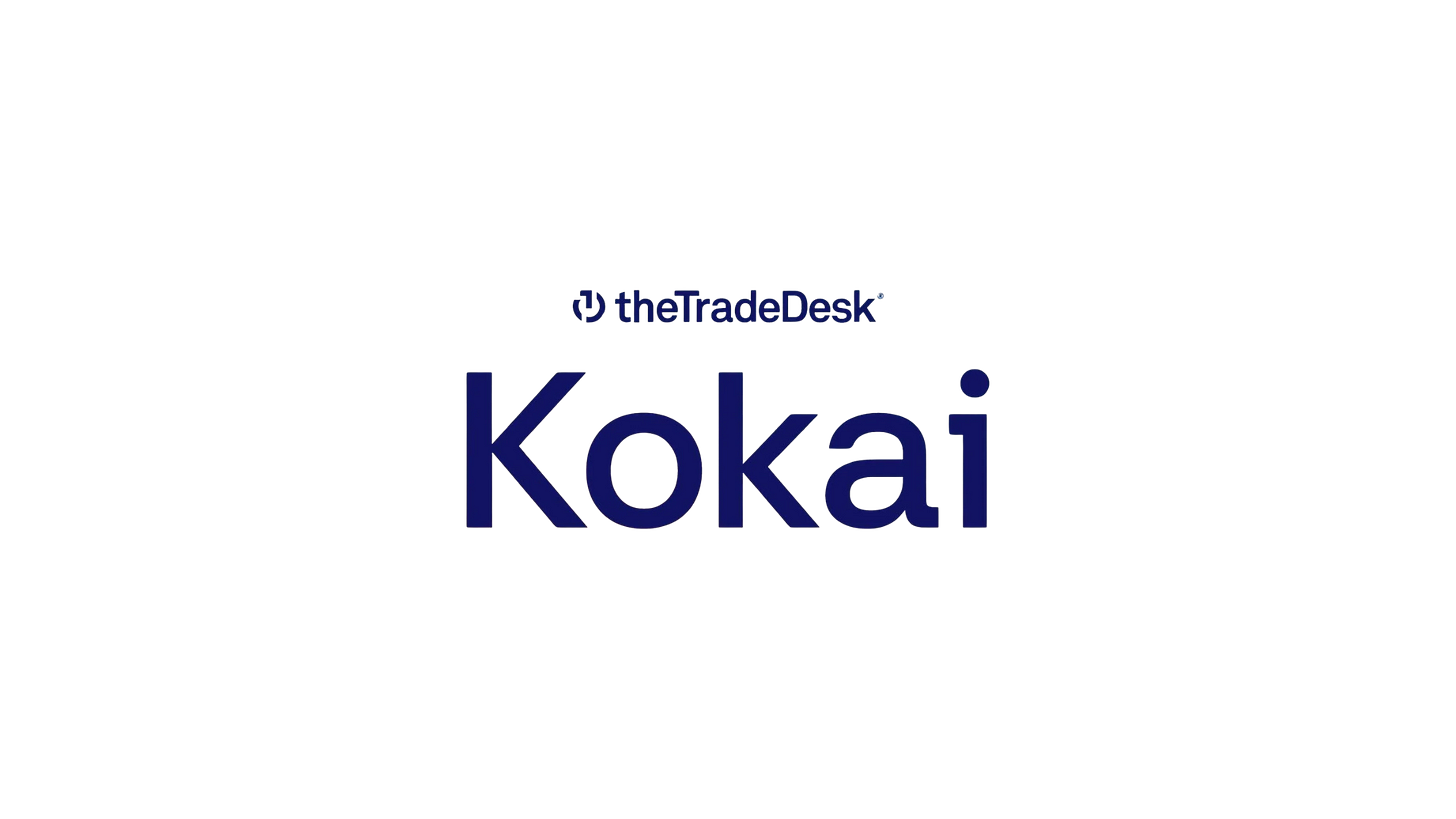The Trade Desk’s Existential Crossroads
Kokai advances TTD’s execution, but the growth story now meets reality. By Benjamin Tan
The Trade Desk ( TTD 0.00%↑ ) has long been the open internet’s counterweight to the walled gardens — an advertising platform built on transparency, neutrality, and scale. For years, that narrative justified a premium valuation. But in the wake of June’s earnings, which sent the stock tumbling from the $90 range to the low $50s, investors must now confront an uncomfortable question: Is TTD’s dominance still structural, or has it become merely executional?
I have held TTD 0.00%↑ for years and pared down half my holdings last summer. I have been feeling stuck with those residual shares—not out of fading admiration for the company, but because the competitive dynamics have shifted, and the market’s re-rating may be more structural than sentimental.
The Catalyst Behind the Slide
The June 2025 quarter was meant to showcase the payoff from Kokai, $TTD’s new AI-driven platform. Instead, it underscored the gap between promise and proof. Revenue grew 19% year over year, and Q3 is expected to post a 14% increase, far below expectations. The result was a valuation compression that wiped out years of multiple expansion.
This is not a broken business—far from it. TTD 0.00%↑ still generates strong free cash flow and remains the default DSP for most major agencies. But the premium multiple it once enjoyed was built on a narrative of sustained 25-30% growth. That story has now flattened to mid-to-high teens, and the market is adjusting accordingly.
Kokai: A Step Forward, Not a Moat
Kokai, the company’s much-touted AI overhaul, is an impressive technological evolution. It brings AI-enhanced bidding, supply-path optimization via OpenPath and OpenSincera, and a new “Deal Desk” feature for pacing and forecasting. Roughly three-quarters of spend now runs through it, with internal data showing double-digit KPI improvements.
Yet despite these advancements, Kokai doesn’t create a new moat — it merely enhances TTD 0.00%↑’s execution layer. The open internet remains fragmented, and while Kokai helps clean up the supply chain, it does not change the economics of ad demand. AMZN 0.00%↑ and GOOG 0.00%↑ (DV360) are embedding their own AI stacks into ad delivery, with privileged access to identity and inventory that TTD 0.00%↑ cannot match. ROKU 0.00%↑ is pushing deeper into shoppable CTV, and even legacy players like Adobe (ADBE 0.00%↑) are modernizing their DSPs for enterprise clients.
The open internet narrative still matters — but advertisers increasingly value identity and efficiency over philosophical purity. In that environment, TTD 0.00%↑’s “neutrality” advantage shrinks.
The Valuation Reality
At roughly 10x EV/Sales and over 40x EV/EBITDA—even after the sell-off—it needs to deliver at least 20% growth consistently to sustain its multiple, and much more to rerate it back to its prior stock prices. Management deserves credit for prudence and capital discipline, but at today’s scale, even strong execution cannot offset macro softness, ad-budget caution, and rising competition from vertically integrated ecosystems.
I view this re-rating as not merely cyclical but evolutionary. The company’s next growth leg must come from deeper retail-data integration, global CTV penetration, and proven AI monetization. Those are multi-year endeavors.
My Take
TTD 0.00%↑ remains a best-in-class DSP with brilliant leadership, robust cash generation, and a differentiated culture. It is still the platform of choice for brands that value transparency. But the stock’s investment case has shifted: from a hypergrowth disruptor to a high-quality operator priced like one.
I will be looking to liquidate my remaining shares. This is not a bearish call on TTD 0.00%↑’s business — it is an acknowledgment that the risk-reward profile no longer fits the narrative that once propelled it. The company will likely continue to lead in its category, but the category itself is maturing.
Sometimes the hardest sell is not the broken story, but the still-great one that has already told its best chapter.
There will not be a Substack post in December. January 2026 will be a year-end review of my Project 350k (see Part 1, Part 2, and Part 3) performance in 2025.
Follow me on X.com (formerly Twitter) @ConsumeOwnTech and Yahoo Finance. My book, Suit Yourself: A Portfolio Strategy for Every Personality Type, blends Enneagram psychology, pop culture, and behavioral finance to offer a personalized roadmap to investing. Learn more at my author page or order the book on Amazon.
Subscribe to Consume Your Own Tech Investing FOR FREE to receive a welcome email with the following:
My Top 10 high-conviction portfolio positions, combining value and growth stocks
Book recommendations in investing, consumer, and tech sectors
Monthly articles delivered straight to your inbox




GOOG's DV360 advantage really stems from their dual position as both an ad platform and a major inventory owner through YouTube and Google properties. They don't just have identity data, they control massive premium demand sources that advertisers have to access through them. The vertical integation creates a compounding moat that Kokai can't address becuase it's fundamentally about supply chain position, not bidding efficiency.
The point about Amazon's privileged access to identity and inventory data is crucial for understanding why TTD's neutrality advantage is shrinking. Amazon's retail flywheel gives them first-party purchase intent data that no DSP can replicate, and they're now bolting AI directly onto that data moat. The adtech market is increasingly bifurcating into walled gardens with integrated data stacks versus the open web, and advertisers are choosing efficiency over philosphy. TTD's challenge isn't execution, its structural positioning in a market where the gorillas keep getting bigger.